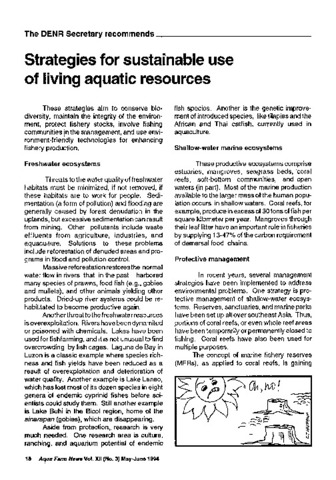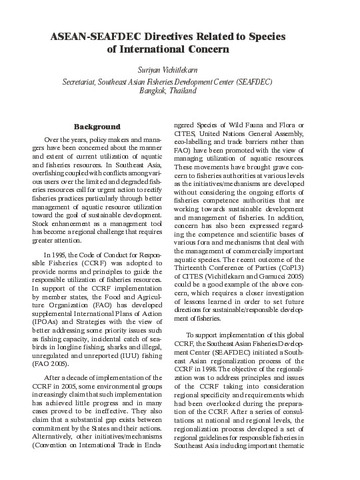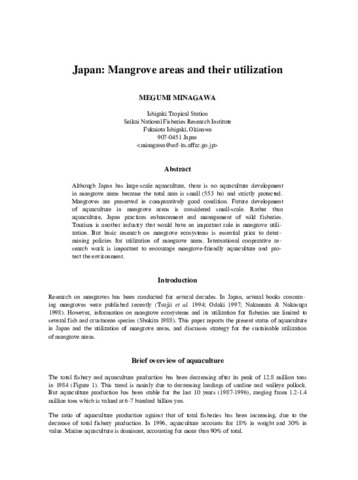Using local user perceptions to evaluate outcomes of protected area management in the Sagay Marine Reserve, Philippines
| dc.contributor.author | Web, Edward L. | |
| dc.contributor.author | Maliao, Ronald J. | |
| dc.contributor.author | Siar, Susana V. | |
| dc.date.accessioned | 2011-05-16T09:18:17Z | |
| dc.date.available | 2011-05-16T09:18:17Z | |
| dc.date.issued | 2004 | |
| dc.identifier.citation | Webb EL, Maliao RJ, Siar SV. 2004. Using local perception to evaluate outcomes of protected area management in the Sagay Marine Reserve, Philippines. Environmental Conservation 31:138-148. | en |
| dc.identifier.uri | http://hdl.handle.net/10862/33 | |
| dc.description.abstract | Local user perceptions of resource trajectory and indicators of protected area outcomes can be useful in the assessment of integrated conservation projects, both marine and terrestrial. In-depth stakeholder surveys using 12 performance indicators were used to evaluate the perceived outcomes of the Sagay Marine Reserve (SMR), the Philippines. These indicators were a measure of whether the SMR had achieved its management objectives in the recent past and what local stakeholders expected in the future. The respondents contextual situation could be correlated with their perceptions of SMR indicators. There was a generally high level of perceived equity and efficiency of SMR management outcomes, but the sustainability of the SMR, particularly the condition of the fisheries, had been poor over the previous 10 years. Few anticipated an improvement in sustainability indicators over the next 10 years. Respondents from an island village within the SMR had more negative (or less positive) perceptions of SMR outcomes because of their high dependence on the degraded resource, combined with physical and economic isolation. Specific remedies to enhance island villagers satisfaction, such as greater participation, empowerment, alternative economic opportunities and fisheries protection, and replenishment, are necessary. This research serves as an example of how indicators perceived by local resource-accessing stakeholders can and should be main components of both marine and terrestrial protected area assessment. | en |
| dc.language.iso | en | en |
| dc.publisher | Cambridge University Press | en |
| dc.relation.ispartof | Environmental Conservation 31:138-148 | en |
| dc.subject | Philippines | en |
| dc.title | Using local user perceptions to evaluate outcomes of protected area management in the Sagay Marine Reserve, Philippines | en |
| dc.type | Article | en |
| dc.identifier.doi | 10.1017/S0376892904001377 | |
| dc.citation.volume | 31 | |
| dc.citation.issue | 2 | |
| dc.citation.spage | 138 | |
| dc.citation.epage | 148 | |
| dc.citation.journalTitle | Environmental Conservation | en |
| dc.subject.asfa | environmental conditions | en |
| dc.subject.asfa | environmental monitoring | en |
| dc.subject.asfa | environmental protection | en |
| dc.subject.asfa | fishery management | en |
| dc.subject.asfa | fishery protection | en |
| dc.subject.asfa | marine fisheries | en |
| dc.subject.asfa | marine parks | en |
| dc.subject.asfa | nature conservation | en |
| dc.subject.asfa | resource management | en |
Files in this item
| Files | ขนาด | รูป | View |
|---|---|---|---|
|
There are no files associated with this item. |
|||
รายการนี้ปรากฏใน (s)
-
Journal Articles [1231]
These papers were contributed by Department staff to various national and international journals.



